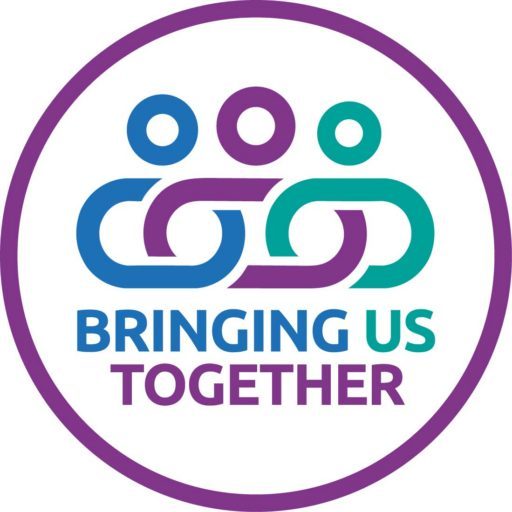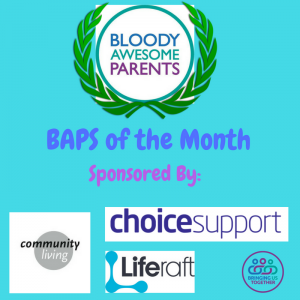Relationships between families, providers and commissioners [1]
At our third Stronger Together event earlier this month, we brought together families who have experience of a child being in an Assessment & Treatment Unit (ATU) and Providers who work in the local communities.
As always, the event was well attended, many familiies having attended our previous two events. We also invited some colleagues from NHS England, who had attended our second event.
This was the first time though that we had invited Providers along to the event. Very often Providers and Families become a Them and Us relationship which helps no one. We wanted to bring together the two groups so they could learn from each other and hopefully take something forward from the weekend.
Thank you for creating the safe space for us all to connect. I haven’t experienced this anywhere else.
It was interesting to hear from both the Providers and the families about their perspective of when things don’t work out. It was also a great opportunity to hear from those who had more positive experiences (yes, there are some out there) and finding out what they thought had helped the transition and relationship work well.
When it went well:
The impact on a parent’s mental and physical health when things went well were obvious. So often, the parent’s health is the last thing we all consider but as our report on Parent Carer Health – The Impact of the Caring Role shows, it should be something everyone considers when they are working with a family.
We asked families and providers to tell us in one word how it felt when things went well.

As you can see, the words “valued”, “respected” and “happy” were words used by the majorty of people. When people, especially parent carers, feel valued, respected and happy, their mental and physical health improves. The benefits are immense, not just to the individual but to their family and to those working with their family. Feeling valued and happy makes for much less confrontational relationships, this means that working together to reach the same goal is less of a challenge to all concerned.
We next asked them what happened? Why did it work well?
What did everyone do?:
- The family members were not seen as a difficult family, they were trusted to be part of the team with the same end goal.
- Family were seen as part of the solution, not part of the problem
- It felt like a true relationship
- Empathy
- There was an excellent united front
- It was open consistent and trustful
- Family were listened to.
- The child or young person was seen as an individual
- We worked together
- Honesty
- Good information and good communication
- It felt like the current manager, the psychiatrist, the young person, the advocate and the family member were all a team
- The fear of the parent that the child would go back was acknowledged (and not dismissed as negative thinking)
- We worked on keeping everyone strong
- We pulled together and still make time to pull together
- Staying out was the goal everyone was aiming for
- Relationships worked
- Young person was in control at the start
- Having the information to make choices
- Well networked families who know the system
- As a team realising we all have the same goal we were just coming from different places
As you can see, working together was what made the difference. Having honest conversations and as one parent said
“they never said they would do something until they knew they could”.
Families, providers and everyone involved had the chance to share relevant information and communication was consistent.
“If you rang someone, they rang you back – even if it was with bad news”
What did the Providers do?:
- Provider listened to my son
- The providers were honest and open about what they could do
- Some providers went above and beyond with their training
- Guidelines were set on what providers could and couldn’t do
- Families were involved in recruitment and employment
- Information from people and families already supported by the provider were provided
- Staff lived nearby
- We Skyped with the staff to get to know them
- The day-to-day manager was committed
- The provider took responsibility
- Continuity from the providers
- Flexible creative and fun support staff who appreciated the person they were supporting
- Matching the support carefully was a priority looking at the who connects with who
- Staff going the extra mile because, as they said, they couldn’t imagine being in our position
- Consistency in the team and training
- Knowing the person and liking the person
- Planning times of crisis
- Seen as an individual even if sharing accommodation
- The strong leadership
- Valuing the staff, the team and the family
- Good assessment do and review process
- Good support to develop skills
- Structured care to build skills
- Withdrawing support slowly as independent skills increase
- Staff very well trained
- Support that was discreet and invisible
- Good provider able to go out into the community without booking appointments.
This was all about the training they provided, the location of staff, the relationships starting before discharge, being flexible, creative and great planning. Most importantly, it was seeing the person as an individual and planning for when/if things went wrong before they did.
Acknowledging that things can and do go wrong is so important to the process.
If we try to work with an “it won’t happen here” attitude, we’re not prepared when it does and this is when everything goes wrong and we end up with re-admission to the ATU or hospital.

What did the Commissioner do?:
- The Commissioner cared
- Commissioners agreed to care team going and staying in the hospital
- At times it was double funded but it kept her alive
- Recognised that early intervention and continuity was essential
- Transition funding suited the individual
- The home suited the individual, we did not just fill a gap the area had.
How was the process different?
- There was a real plan on management for safety
- The necessary people were involved – not always clinical and sometimes independent
- There was a good transition, long and staggered, with some core staff
- There was a very good transition plan – we used a photo story
- Moving out was one step at a time
- Ups and downs were discussed
- A crisis plan for provider person and community team is available
- Planning from experience and learning from the previous provider
- We thought about what could go wrong and how to manage it
- We had the conversations about what could go wrong before the discharge
- It was a proactive transition
- Not giving up when there is an issue
- Having community professionals back up
- Planning time very very important
- It was Person centred
- Person Centred Practice
- It was a person centred – not a business case based on a pen picture
- Positive approaches
- A “can do” attitude
- Fully recognising the persons needs
- Admitting we don’t always get it right. Honesty is key
- Advocacy for the family was available
- Support team worked closely together
Good planning, the time to plan and acknowledging that the discharge is just step one, not the end goal were key to staying out.
If your child has been in a unit for years, they can’t be expected to settle overnight into a new setting. It’s like dieting – eating badly for five years is never going to be repaired by a one week eating plan.
Most of the things that made it work for everyone didn’t come at a financial cost, obviously some did. However, there were 6 key themes:
- Good Communication
- Working Together
- All working towards the same goal of staying out
- Seeing the person as an individual.
- Appropriate training
- Good planning
Stronger Together
Make sure you don’t miss out on this series of posts. Sign up for updates.
We will also be covering why it goes wrong, how does that feel, what families actually want for their children, what questions providers need to be asking families, what questions families need to be asking providers and what can we do now to make it better?
Thanks to
With huge thanks to Avenues, Certitude, Choice Support, Dimensions, Look Ahead, MacIntryre and United Response for sponsoring this event and making it possible to bring everyone together.
Mum to three great kids, each with a different SEN.
Transplanted from the NW to the SE.
Co-founder and Director of Bringing Us Together







